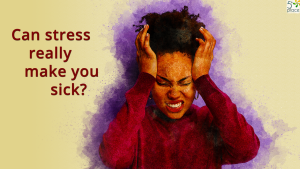Understand healthy habits for lasting wellbeing

Have you ever noticed how a good walk can clear your head? Or how a challenging workout can leave you feeling…well, good? It’s more than just endorphins. For many of us, life throws curveballs – stress, loss, difficult times – and sometimes those feelings settle into something deeper, like depression. It can feel isolating, overwhelming, and like there’s no way out. But what if I told you that something as simple as getting active, engaging in sport and depression management, could be a powerful tool in your wellbeing toolkit? This isn’t about becoming an Olympic athlete; it’s about finding movement that feels right for you and harnessing its incredible power. We’ll explore how physical activity can genuinely help, what kinds of exercise are particularly beneficial, and how to get started even when motivation feels impossible. We’ll also look at the science behind it, and how to build sustainable habits for lasting mental health. It’s a journey, not a race, and we’ll cover how to navigate the ups and downs along the way.
Key Takeaways
- Regular physical activity can be as effective as medication for mild to moderate depression.
- Exercise releases endorphins, reduces stress hormones, and improves sleep – all crucial for mental wellbeing.
- Finding an activity you enjoy is key to sticking with it; it doesn’t have to be traditional “sport.”
- Starting small and building gradually is more sustainable than trying to do too much too soon.
- Social sports and team activities can combat feelings of isolation and provide a support network.
- It’s important to listen to your body and not push yourself too hard, especially when you’re already feeling low.
- Combining exercise with other therapies, like talk therapy, can provide a comprehensive approach to managing depression.
The Link Between Physical Health and Mental Wellbeing
For a long time, we’ve treated physical and mental health as separate entities. But the truth is, they’re deeply intertwined. Think of it like this: your brain is an organ, just like your heart or your lungs. And like any organ, it needs nourishment and care to function optimally. Exercise provides that nourishment. It increases blood flow to the brain, promoting the growth of new brain cells and improving cognitive function. This is particularly important when dealing with depression, as depression can actually shrink certain areas of the brain. Beyond the physical changes, exercise also impacts our neurochemistry. It boosts levels of serotonin, dopamine, and norepinephrine – neurotransmitters that play a vital role in regulating mood. This isn’t just anecdotal; research consistently demonstrates a strong correlation between physical activity and reduced symptoms of depression.
How Sport Helps Combat Depression Symptoms
Let’s get specific. How does sport and depression actually work? It’s multifaceted. Firstly, exercise is a fantastic stress reliever. When we’re stressed, our bodies release cortisol, the “stress hormone.” Chronic stress can contribute to depression. Exercise helps regulate cortisol levels, bringing them back into balance. Secondly, physical activity improves sleep quality. Sleep disturbances are a common symptom of depression, creating a vicious cycle. Better sleep leads to improved mood, and vice versa. Thirdly, engaging in sports, even individual ones like running or swimming, can provide a sense of accomplishment and mastery. Setting goals and achieving them, no matter how small, can boost self-esteem and confidence. Finally, many sports involve social interaction, which can combat feelings of isolation and loneliness – a hallmark of depression. Consider joining a local running club or a recreational sports league.
Types of Exercise Best Suited for Boosting Mood
The good news is, you don’t need a gym membership or a specific skill set to reap the benefits. The best exercise is the one you’ll actually do. However, some types of exercise are particularly effective for improving mood.
- Aerobic Exercise: Activities like running, swimming, cycling, and dancing are excellent for releasing endorphins. Aim for at least 30 minutes of moderate-intensity aerobic exercise most days of the week.
- Strength Training: Lifting weights or doing bodyweight exercises (like push-ups and squats) can improve mood and reduce anxiety. It also builds strength and resilience, both physically and mentally.
- Yoga and Tai Chi: These mind-body practices combine physical postures, breathing techniques, and meditation. They can reduce stress, improve flexibility, and promote a sense of calm. Studies show yoga can be helpful for managing symptoms of anxiety and depression.
- Outdoor Activities: Exercising in nature – hiking, walking in the park, gardening – has added benefits. Exposure to sunlight boosts vitamin D levels, which are linked to mood regulation. The natural environment can also be incredibly restorative.
- Team Sports: Basketball, soccer, volleyball – these activities offer the benefits of exercise plus the social connection and camaraderie of being part of a team.
Overcoming Barriers to Exercise When Depressed
One of the biggest challenges is simply getting started. When you’re feeling depressed, motivation can be incredibly low. Here are some strategies to overcome those barriers:
- Start Small: Don’t try to overhaul your entire lifestyle overnight. Begin with just 10-15 minutes of activity per day. A short walk around the block is a great starting point.
- Schedule It: Treat exercise like any other important appointment. Put it in your calendar and stick to it.
- Find a Buddy: Exercising with a friend or family member can provide accountability and support.
- Make It Enjoyable: Choose an activity you genuinely enjoy. If you hate running, don’t force yourself to run!
- Be Kind to Yourself: There will be days when you don’t feel up to exercising. That’s okay. Don’t beat yourself up about it. Just try again tomorrow.
- Focus on How You Feel Afterwards: Remind yourself of the positive effects of exercise – the increased energy, the improved mood, the reduced stress.
Building a Sustainable Exercise Routine
Consistency is key. Here’s how to build a routine that lasts:
- Set Realistic Goals: Don’t aim for perfection. Focus on making small, incremental changes.
- Track Your Progress: Use a fitness tracker or a journal to monitor your activity levels. Seeing your progress can be motivating.
- Reward Yourself: Celebrate your accomplishments, no matter how small.
- Mix It Up: Vary your workouts to prevent boredom and challenge different muscle groups.
- Listen to Your Body: Rest when you need to. Don’t push yourself too hard, especially when you’re feeling unwell.
- Make It a Habit: The more you exercise, the easier it will become. Eventually, it will feel like a natural part of your routine.
The Role of Social Support in Exercise and Mental Health
Connecting with others is crucial for mental wellbeing. Joining a sports team, a running club, or a fitness class can provide a sense of community and belonging. Having people to share your experiences with, to encourage you, and to hold you accountable can make all the difference. Social interaction also releases oxytocin, the “bonding hormone,” which promotes feelings of connection and trust. Even simply exercising with a friend can make it more enjoyable and sustainable. Don’t underestimate the power of shared activity.
Combining Exercise with Other Treatments
Exercise is a powerful tool, but it’s not a cure-all. For many people, it’s most effective when combined with other treatments, such as talk therapy (psychotherapy) and medication. Talk therapy can help you address the underlying causes of your depression and develop coping mechanisms. Medication can help regulate brain chemistry and alleviate symptoms. A holistic approach that addresses both the physical and psychological aspects of depression is often the most successful. If you are struggling with depression, please reach out to a healthcare professional.
FAQs
Q: I have never exercised before. Where do I start?
A: Start incredibly slowly! A 10-minute walk each day is a fantastic beginning. Focus on finding something you enjoy, and gradually increase the duration and intensity as you feel comfortable.
Q: What if I’m too tired to exercise when I’m depressed?
A: That’s completely understandable. On those days, focus on very gentle movement – stretching, yoga, or a short, slow walk. Even a little bit of activity can make a difference.
Q: Can exercise replace medication for depression?
A: For mild to moderate depression, exercise can be as effective as medication for some people. However, it’s important to talk to your doctor to determine the best course of treatment for you.
Q: I feel self-conscious about exercising in public. What can I do?
A: Start with activities you can do in private, like walking at home or following an online workout video. As your confidence grows, you can gradually venture out into public spaces.
Q: How long does it take to see results from exercise?
A: You may start to feel better within a few days or weeks. However, it typically takes several weeks or months of consistent exercise to see significant improvements in your mood.
Let’s remember that taking care of your mental health is a journey, not a destination. Sport and depression don’t have to be enemies. By incorporating regular physical activity into your life, you can empower yourself to take control of your wellbeing and build a brighter, healthier future. Don’t be afraid to experiment, find what works for you, and celebrate every step of the way. You deserve to feel good, and movement can be a powerful ally in that pursuit. I’d love to hear about your experiences – what kind of activities do you enjoy? Share your thoughts in the comments below, and let’s support each other on this path to wellness!
Hi, I’m Sophia! Welcome to my blog Try Stress Management (trystressmanagement.com), where I share simple, down-to-earth ways to handle stress and bring more calm into everyday life. Think of me as your friendly guide, offering practical tips, reflections, and little reminders that we’re all figuring this out together.
When I’m not blogging, you’ll usually find me with a good book, sipping tea, or exploring new walking trails. I believe small changes can make a big difference—and that a calmer, happier life is possible for everyone.




